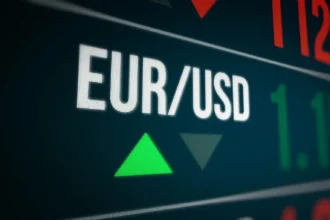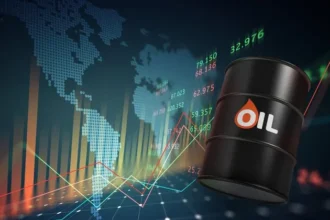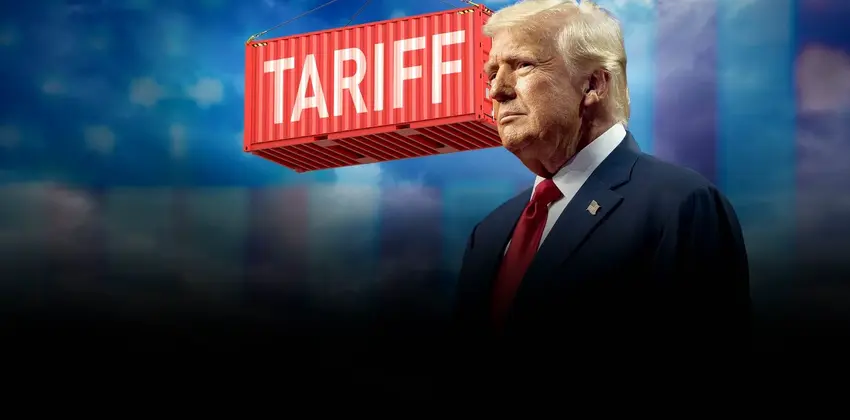1. Trump’s “Liberation Day” Tariff Announcement: What’s at Stake?
The long-anticipated day has arrived: U.S. President Donald Trump is preparing to unveil a new round of tariffs today, dubbed “Liberation Day” by the administration. Scheduled for 16:00 ET (20:00 GMT), Trump’s announcement is poised to alter the trajectory of global trade dynamics. The details of the new tariffs remain shrouded in uncertainty, but reports suggest they will include a mix of tariffs targeting foreign imports, as well as duties on specific goods like cars.
This tariff announcement is expected to immediately impact the global trade landscape. Investors and businesses alike are bracing for potential disruption, with fears that the new duties could trigger inflationary pressures, economic slowdowns, and strained international relationships.
2. U.S. Stock Futures Edge Lower
As Trump’s announcement approaches, U.S. stock futures are showing signs of caution. By 03:41 ET, futures on major indices such as the Dow Jones, S&P 500, and Nasdaq 100 were all lower, signaling investor unease. The Dow futures were down by 0.2%, while S&P 500 futures and Nasdaq 100 futures had also dipped by similar margins.
Despite a series of choppy sessions in the past week, the stock market has shown slight gains overall. Investors are attempting to position themselves for what’s to come, awaiting more concrete details from the White House. As tariff concerns mount, volatility measures have risen, with some analysts noting a shift in sentiment, particularly regarding the Trump administration’s combative approach to trade relations.
3. Gold Prices Hit Record Highs, Then Ease
Amidst the looming uncertainty surrounding the tariff announcements, gold prices have surged to all-time highs, reflecting heightened demand for safe-haven assets. On the morning of Trump’s tariff speech, spot gold prices had edged slightly lower by 0.2% to $3,118.73 per ounce. Despite this, the yellow metal had gained 0.4% earlier in Asian trading hours, following its recent peaks.
Gold’s price spike has been fueled by investors flocking to the precious metal as a hedge against the geopolitical and economic risks posed by the looming tariffs. While the Trump administration’s aggressive stance has created volatility, gold’s role as a safe-haven asset is underscored by its resilience during periods of global market turmoil.
4. U.S. Dollar and Bitcoin Stay Steady
The U.S. dollar has remained relatively stable in the face of Trump’s tariff threats, with the dollar index holding steady. However, concerns regarding the potential for reciprocal tariffs against major U.S. trading partners have kept the markets on edge. Additionally, Bitcoin, the largest cryptocurrency by market cap, has shown only a modest rebound from its first-quarter losses, with traders adopting a more risk-averse stance.
The uncertainty surrounding Trump’s “Liberation Day” tariffs has kept many investors hesitant to make aggressive moves in the foreign exchange or cryptocurrency markets. Although Bitcoin remains a popular store of value for some, its volatility mirrors broader market sentiment as it reacts to shifting economic conditions.
5. Oil Prices Hold Steady Amid Tariff Concerns
Oil prices have experienced a slight dip as traders remain cautious ahead of Trump’s expected tariff announcement. Despite this, oil prices have shown some resilience over the past week due to ongoing geopolitical tensions, including Trump’s threats to impose sanctions on Russia and take military action against Iran over nuclear negotiations.
Market observers are also eyeing the upcoming OPEC+ meeting, where the group of oil-producing nations may discuss increasing production to offset potential disruptions. However, fears about the impact of Trump’s tariffs on global growth continue to limit significant price increases, as traders weigh the potential damage to demand.
6. Economic Impact and Investor Concerns
Trump’s tariffs have been a central feature of his economic policy, with the president citing trade imbalances and the need to restore U.S. manufacturing as justification. However, economists have raised concerns that these aggressive moves could push inflation higher and stifle economic growth. Some have even warned that the tariffs may lead to a recession if they are not strategically implemented.
While Trump views tariffs as a tool for correcting global trade inequities, the lingering uncertainty about their exact nature is creating unease among businesses and investors. Companies are expressing concerns that the tariffs could derail their growth plans, with uncertainty about future trade policies making it difficult to forecast the direction of the U.S. economy.
Frequently Asked Questions (FAQs)
Q1: What are the key details of Trump’s “Liberation Day” tariff announcement?
Trump’s tariff announcement is set to include new levies on a variety of imports, including cars, steel, and aluminum. While specifics remain unclear, the tariffs are expected to be broad, affecting multiple industries and triggering uncertainty in global markets.
Q2: How will Trump’s tariffs impact U.S. stock markets?
Stock futures are already showing signs of caution, with investors bracing for the market’s reaction to Trump’s announcement. If the tariffs are more aggressive than anticipated, they could lead to volatility in U.S. equities and potentially lower stock prices.
Q3: Why are gold prices rising ahead of the tariff announcement?
Gold is considered a safe-haven asset, meaning that investors tend to buy it during periods of uncertainty. The upcoming tariff announcement has caused apprehension, driving demand for gold as a store of value during these uncertain times.
Q4: How could Trump’s tariffs affect global trade?
If the tariffs go into effect, they could disrupt international trade relations, especially with major U.S. trading partners. This could lead to higher prices for goods, strained diplomatic ties, and potential retaliatory tariffs from other nations.
Q5: What is the likely effect of Trump’s tariffs on oil prices?
While oil prices have dipped slightly ahead of the tariff announcement, geopolitical tensions surrounding Russia and Iran are still driving oil prices higher. However, concerns that tariffs could slow global economic growth may limit significant price increases.
Q6: Will Bitcoin be affected by Trump’s tariffs?
Bitcoin, like other risk assets, is sensitive to broader economic developments. As uncertainty increases around global trade, Bitcoin’s price may experience volatility, though it has shown resilience in the face of economic disruption.
Disclaimer
The content provided in this article is for informational purposes only and does not constitute financial advice. The information in this post is based on publicly available data and is subject to change. Please consult with a qualified financial advisor before making any investment decisions. The author and publisher are not responsible for any financial losses incurred as a result of following the content provided in this blog post.



